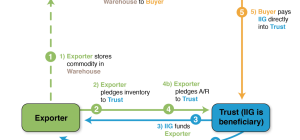Consolidating your federal student loans is a great way of managing your payments, but it comes with several stipulations. Although the federal program lets students consolidate loans for a more streamlined payment, you need to consider several pros and cons. Are you looking into federal loan forgiveness vs. consolidation?
Direct loan consolidation allows you to take advantage of some income-based repayment programs that can eventually lead to loan forgiveness, depending on your repayment and situation. However, this type of consolidation does not offer lower rates. Direct loan consolidation also allows you to retain any unique benefits that your federal loan might have as well as consumer protections such as deferment.
As a borrower, you should know the following about direct consolidated loans:
It Adds Approximately 0.125 Percent Interest
When you consolidate your student loans, the government will combine all your previous loans into a single loan. You will get a weighted interest average on your previous loans under the direct consolidated loan, which will be rounded up by 1/8th of a percent. For instance, if your interest average is 5.25, it will become 5.375 after consolidation.
Do the Math with a Loan Consolidation Calculator
You can use several online tools to calculate your new interest. As part of online direct loan application, the lender’s site will calculate your new rate before you submit the application. However, you can still calculate your weighted average without an online tool.
You can calculate the new rate by multiplying your interest rate with each loan then sum it up and divide with the sum of your loan balances.
Terms Limits Can Change
Under consolidation, the term limits can change. Unlike manyprivate student loansthat usually have a default 10-year plan; the term of a consolidated loan can range from seven to thirty years, depending on your repayment schedule and balance.
You can only Consolidate Once Every 180 Days
If you consolidate twice in a 180-day period, the second consolidation will be included in the first one. Therefore, you will not be able to consolidate twice during that period. This means, that you should plan your finances well to ensure that you won’t need to consolidate again during that time.
Direct Consolidation is Necessary to Enroll in PSLF (public service loan forgiveness)
PSLF forgives or eradicates federal student loans for persons who are employed fulltime in a nonprofit or public service job and make eligible timely payments. If you reconsolidate your direct loan, you will reset the clock on your qualified payments and they will start at zero.
Consolidation can Improve Your Payment Options
Do you have older federal loans? You might be able to improve your options by using direct consolidation. The Department of Education’s PAYE has an income-driven program that is only available to first-time borrowers who took out student loans after October 2007.
However, if you took out your loan before then, you can qualify for REPAYE (Revised Pay as You Earn) under direct loan consolidation.
It Can Rehabilitate Loans in Default
Consolidating loans in default is a lot easier than rehabilitating several loans. It is also much easier to rehabilitate a single consolidated loan than it is to rehabilitate multiple loans. Rehabilitation removes the default status from your credit report. If your loans are in default, they are in danger of wage garnishment.
You Can Strategize Which Loans to Consolidate
You do not have to bring everything under one consolidation loan. You can deselect any loan that you do not want to include in your consolidation from the list.
If you want to pay off your debts faster, you should consult an expert.
How Student Loan Debt Adds Up?
In the Infographic below courtesy of Debt.org, you can see how loan student debt adds up and which various options a student has for paying off a loan.








